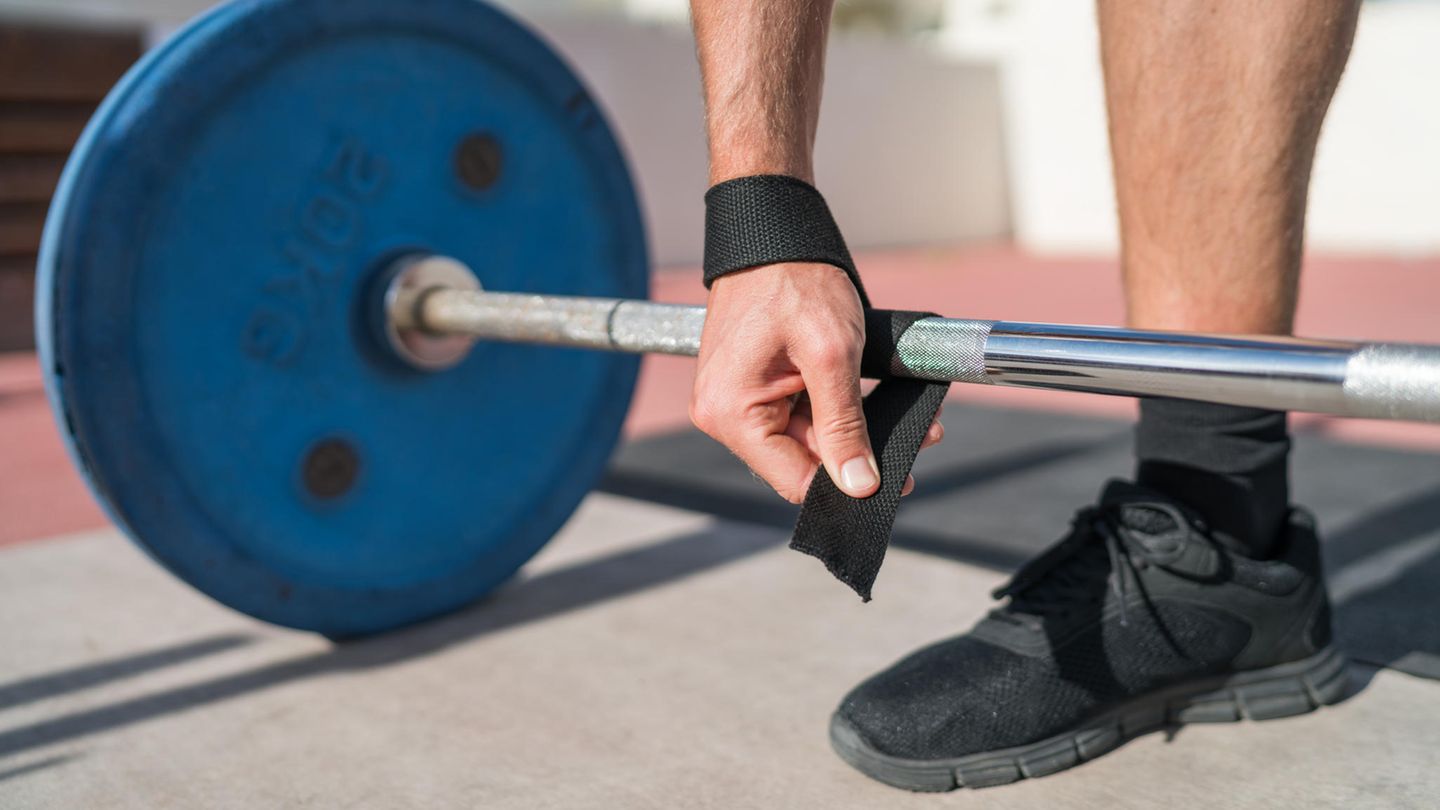Fitness tools
Train aids in strength training: advantages and disadvantages of Lifting Straps
Fitness and strength training in the gym or at home is more popular than ever. Train aids are increasingly being used. When the ligaments and hooks make sense during training.
Some of them are demonized, others swear by the little extra kick in strength training. Hardly any tool is as controversial in the fitness community. The straps made of textile or leather, also called “Lifting Straps”, do not look particularly spectacular at second glance. The article reveals what exactly the variants are used for, which variants are used, whereby they should help and what exactly the fitness community splits.
Train aids: What is that actually?
Classic tensile aids are about five centimeters wide tapes made of textile (e.g. neoprene or cotton) or leather, with a loop at one end. The side on the wrist is somewhat padded on some models. So-called tensile or lifting hooks are even more comfortable. And the name suggests that the tape that you wrap around the dumbbell or pull-up bar is replaced on the inside of the hand with a hook covered with non-slip rubber.
How do train aids work for strength training?
The principle of tensile aid is simple. In the classic ribbons you slip into the loop with your hand and tighten the closure. Depending on the length, the rest of the volume is wrapped up around the barbell several times. The tensile aids with hooks are fixed on the wrist in such a way that the hooks lie with the open side upwards on the hand plate. Now you can be hung from above for pull -ups and led to the barbell bar from below.
Where can train aids be used?
Train aids were primarily developed for free dumbbell training and strength training with their own body weight. What does that mean specifically? Train aids work wherever dumbbells are involved. And regardless of whether you pull yourself up on the pole – like when pulling at the pull, or whether you can raise the bar with the appropriate weights. A classic for this is the so -called cross lifting, a basic exercise from strength training. Here, a barbell of the light squat is led to the top until the legs are stretched through. Train aids can also be used when training with dumbbells. Important: Train aids are prohibited in official competitions.
In order to improve the grip on the dumbbell and to bind sweat on the palms of the palms, you usually use (also known as Magnesia). If the grip is slowly running out in the last exercise set, the chalk cannot align much. And this is exactly where the train aids come into play. Regardless of whether with a hook or loop: the tensile aids on the dumbbell rod relieve the forearms that were heavily used for cross -lifting and thus also influence the grip. During the cross -lifting you mainly train the back extension and the front thigh muscles. The juice often goes out in the forearms and hands. The train aids therefore offer the possibility to train the target muscle (in the back or legs) for a little longer. To do this, significantly higher weights can also be made and pulled with tensile aids. Sounds like a sensible training tool. And that is also if you keep an important basic rule in mind: the clean technology when executing the exercises has a top priority.
Why are train aids in the scene controversial?
As practical as the tensile aids are in burning forearms, the little helpers are being discussed so eagerly. Central criticism: The fact that the forearm muscles raise the alarm is a signal of the body that the training limit is reached. With the tensile aids, this protective function is out and risk injuries that result from overload. Rather, you have to train the grip power, according to the train aid skeptic. Your thesis: Anyone who uses train aids regularly in training promotes muscular discbalances between the handle and forearm power and the power in the back, the (top) arms and legs.
Last important note: Beginners should do without train aids at their first units in the gym or at home. If you are more ambitious, you can use train aids every now and then at the end of training sessions to tickle a few more percent more.
*This article contains so-called affiliate links to products in online shops. If a user clicks on it and buys something, the publisher receives a commission from the dealer, not from the manufacturer. Of course, where and when you buy a product is up to you.
Source: Stern
I am Pierce Boyd, a driven and ambitious professional working in the news industry. I have been writing for 24 Hours Worlds for over five years, specializing in sports section coverage. During my tenure at the publication, I have built an impressive portfolio of articles that has earned me a reputation as an experienced journalist and content creator.




